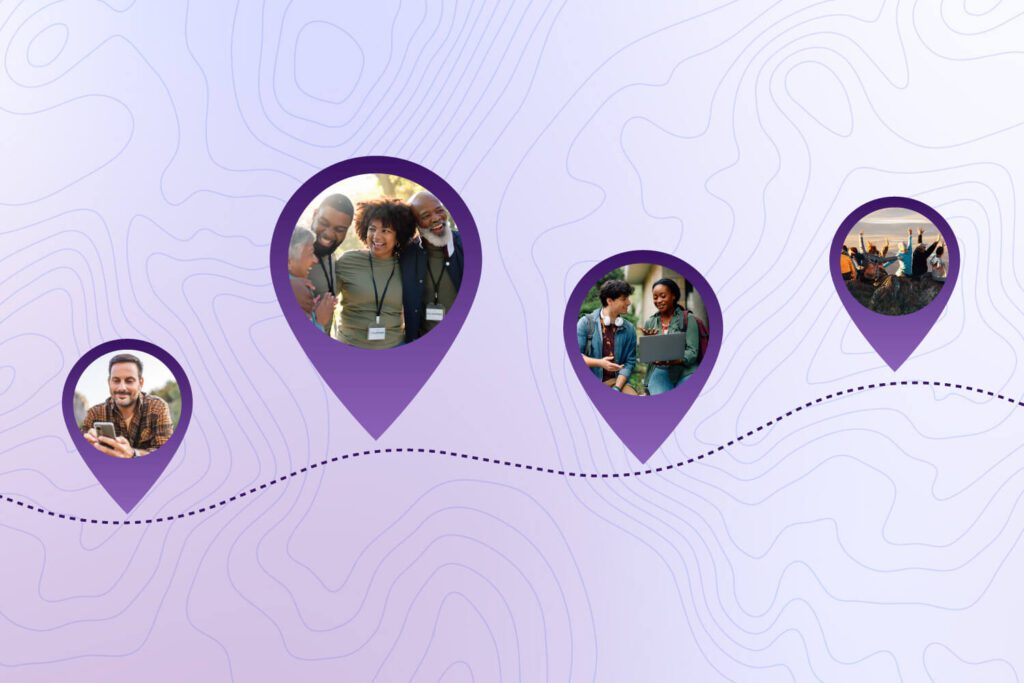The average new donor retention rate for nonprofit organizations rests at about 45%, meaning that only a little less than half of donors you acquire this year will give next year. Fortunately, you can improve your chances of keeping new supporters around for the long haul with an effective new donor welcome kit.
We’ll cover five tips that can help you put together an impressive welcome kit. One of the most important parts of welcoming new donors is your timeliness. Let’s get started by discussing when to send out your first welcome message.
1. Include a variety of welcome materials.
Make a strong impression on supporters by including a variety of resources in your welcome packet. For example, you could include a handwritten thank-you note, your most recent newsletter, contact information, and a pamphlet outlining basic information about your organization. Varying both the content and design of these elements creates a richness that invites new donors to dig into the materials. When creating these resources, use designs that are distinct from each other but still cohesive with your organization’s branding. For instance, you might print each element on a different size of paper or use different brand colors across content. Be careful not to overwhelm new donors by adding too many elements or including information that’s potentially irrelevant to them (like a brochure about legacy giving). Keep donors engaged by limiting the welcome kit to around five key resources that are digestible and relevant for most donors.2. Welcome new donors immediately.
The period of time immediately after a new donor gives is critical. This timeframe can determine if they will continue to give many more times and become a dedicated, repeat donor. Welcoming new donors when their donation is fresh in their minds will make them feel appreciated and inspire them to get involved. Here are a few general guidelines for what welcome materials you should send and when:- Donation receipt. If someone makes a donation online, set up an automated receipt that will appear in their inbox right after they donate. Remember to include a sincere thank-you message in this email.
- Welcome email. For online donations, aim to send a detailed, personalized welcome email within a few hours. If the donor contributes another way, like in person at a fundraising event, set up a form to capture email addresses so you can send a welcome email within a day or two.
- Physical welcome pack. Your donors should receive their welcome kit in the mail within two weeks of making their first gift. If it’s within your budget, send the kit through first class to ensure it arrives on time.
3. Send a hard copy.
Welcome email series ensure that you can send out several well-planned messages over time and adjust them depending on the donor’s response. It’s an inexpensive way to keep the connection going right out of the gate. As mentioned above, if possible, complement those emails with a direct mail welcome pack. You might be surprised just how much supporters care about mailed outreach. Response rates for direct mail have been rising steadily for the last decade and are higher than most other marketing channels. Direct mail welcome kits also tend to feel more personal and could even be your audience’s preferred method of communication. While personalized emails can communicate a warm, genuine welcome, the time and care associated with sending a physical packet could go the extra mile needed to motivate donors to give again or volunteer.4. Write a warm, personal message.
People prefer receiving personalized messages over generic ones, whether they come from a for-profit business or your nonprofit organization. Messages that are tailored to factors like their motivation for giving, demographic information, and donor level feel more genuine and can even lead to increased retention levels. Use these strategies to infuse warmth and personalization into your welcome messages:- Use the personal pronoun, “you.” Use approachable language tailored for a clear audience. Adding the word “you” makes it feel like you’re speaking directly to each new supporter.
- Share stories. Every organization has a story, whether that’s the story of how far your organization has come since its creation or a testimony from a specific beneficiary. Adding these stories breathes new life into your welcome message.
- Use a conversational tone. Keep your tone casual and relatable to readers while still maintaining your overall brand voice and style. A good rule of thumb is to write at a fourth to sixth-grade reading level and use informal elements like short sentences and contractions.
5. Ask donors to take the next step.
The next step for new donors won’t always mean soliciting another gift (although some organizations do make another ask). Instead, include materials in your welcome kit that ask donors to get involved in a way that isn’t financial. Asking donors to participate in new ways can boost engagement and make them feel more connected to your cause. Instead of asking for a monetary contribution, add resources in your welcome kit that empower new donors to participate in:- Fundraising events
- Introductory volunteer activities
- “Meet the staff” or “behind the scenes” activities
- Celebrations of major milestones (like your nonprofit’s anniversary)
The bottom line about new donor welcome kits
Welcome kits should be only the beginning for your new donors. Supplement these packs with a comprehensive donor retention strategy that lets donors know how much you value them and invites them to stay involved.
Ready to Get Started?




